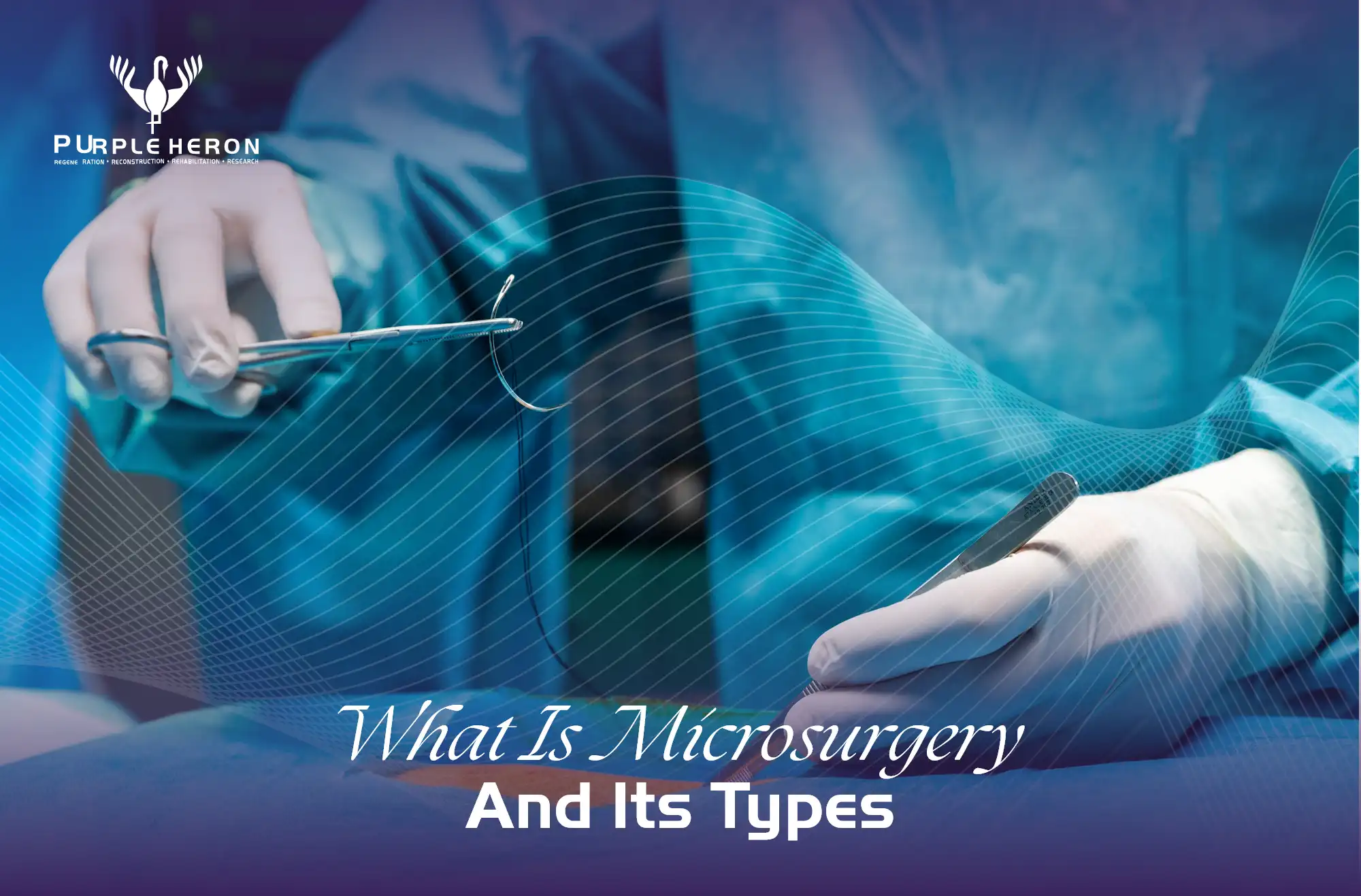What is Microsurgery?
In terms of a definition, microsurgery refers to the medical procedure that requires a microscope to be administered effectively for viewing and operating on it. Such body parts can be tissues, blood vessels, nerves, and tubes.
Microsurgery procedures are typically performed on areas like the nose, throat, and ear as they have delicate structures, and opening them up for regular surgery doesn’t seem a prudent option. The procedure, involving the use of an operating room microscope, isn’t a first preferred choice for the treatment of reconstructive issues.
However, it’s used to take care of complex issues in place of other issues such as skin grafting, primary closure, or regional and local flap transfer.
Types of Microsurgery Procedures
There are multiple surgical procedures when it comes to microsurgery. Have a look:
● Head and neck reconstruction with free tissue transfer
● Breast reconstruction with free tissue transfer
● Complex wound reconstruction
● Vascularized bone flap transfer
● Toe transplantation
● Lymphatic reconstruction
● Digit replantation
● Nerve repair and grafting
What does Microsurgery Take Care of?
With a microsurgery procedure, you can expect to get treated from:
01. Effects of cancer
02. Physical trauma or wounds
03. Birth abnormalities
The need for microsurgery can also arise if you’re looking to:
01. Get an amputated body part reattached to your body (limb preservation)
02. Reconstruct microscopic regions of your body such as nerves and blood vessels.
03. Rebuild those areas of the body that went through trauma or surgery.
It’s important to understand that microsurgery is an option that’s available when other traditional ways of surgery aren’t as effective.
What Different Instruments are Used in Microsurgery?
Each instrument is specifically designed to be used in microsurgery, given the complex nature of its treatment. These instruments are more than capable of going through complex microscopic regions in the body, aiding the surgeons to do their work effectively and deliver the best results.
Some of the instruments used in microsurgery are given below:
● Needle holders
● Forceps
● Scissors
● Irrigators
● Clamp applicators
● Standard tools for surgery
● Vessel dilators
● Vascular clamps to regulate bleeding
● Special needles and threads
Microsurgery Procedure Details
Before Microsurgery
Before undergoing a microsurgery procedure, you’ll be meeting a surgeon for the first consultation. In this meeting, a surgeon learns and gathers important information about you and your health, and tries to understand the expectations you have from the microsurgery procedure.
The surgeons might also click photographs of the regions on which they’ll be supposed to work, so that they can compare the before and after treatment appearance of the affected areas.
This meeting will also involve your surgeon discussing about the potential risks and effects involved with the surgery, updating you about the steps you’ll be needing to take to ensure proper care, as well as discuss the follow-up procedures with you.
For any queries that you might have about the microsurgery procedure, this meeting is the perfect time to get them sorted.
During Microsurgery
A typical microsurgery procedure will involve you being put to ‘sleep’ by administering a general anesthesia, so that you don’t feel any pain when the procedure gets underway. A microsurgery procedure takes place at the hospital, where your surgeon will be present.
Each microsurgery procedure is different, depending largely on what the surgeon is supposed to do. For instance, if you’re undergoing a tissue transfer, then your surgeon is going to remove a healthy portion from the donor site on your body. The new tissue is then reattached to the new area by making an incision as well as reattaching the blood vessels there by using a microscope. Once the tissue transfer procedure is completed, the surgeon closes the incisions with removable stitches or dissolvable sutures.
After Microsurgery
The course of treatment after getting a microsurgery done depends upon the type of microsurgery you elected to get the treatment for. If you went for a flap reconstruction, for instance, your team will be monitoring your flap diligently to ensure that your newly connected blood vessels are working in a proper manner. That’s because the first 24 hours are critical to monitor the blood vessels after the surgery is completed.
What are the Benefits of Microsurgery?
The biggest benefit of microsurgery is that it restores the normal functioning of the affected region in the body.
Other benefits include:
01. Cleaner and smaller incisions
02. Minimal tissue handling
03. Lesser haemorrhage (bleeding)
All these benefits lead to faster healing from the surgery, and a highly satisfying outcome.
Potential Risks with Microsurgery
Despite the benefits it offers, there are a few potential risks associated with microsurgery. They are:
01. Bleeding
02. Numbness
03. Pain, infection, and swelling
04. Tissue loss
05. Scarring
06. Requirement of more surgeries
How to Prepare for Microsurgery?
Before heading over for microsurgery, you might be asked to undergo lab testing or a medical evaluation, consume some medicines, and undergo some lifestyle habits such as stopping the consumption of alcohol, smoking, and stop with anti-inflammatory drugs such as aspirin, as they could lead to increased bleeding.
Recovery From Microsurgery
The amount of time you’ll need to recover from the microsurgery procedure depends largely on the type of surgery you’ll be undergoing. Based on that, your surgeon will discuss the estimated recovery time for you.
Other than recovery, what’s also important is to note that despite its multiple benefits and advantages, the success rate for surgery and the impact of its outcome varies from person to person, for which the best information can be offered to you by your surgeon.
In case you see any visible side effects after your surgery, such as bleeding, pain or swelling, you need to consult your surgeon back again, immediately.
The symptoms for this emergency visit include, but are not limited to:
01. Irregular heartbeat
02. Chest pain
03. Trouble in breathing
Consult the Right Experts for Your Microsurgery Requirements
If you’ve decided to get a microsurgery procedure done, then the experts can help out. The surgeons are backed with years of professional experience, delivering immaculate surgical treatments and procedures spanning across all regions in the body.
Schedule your first consultation!
also read our blog on “How Does Minimally Invasive Microsurgery Work?”


